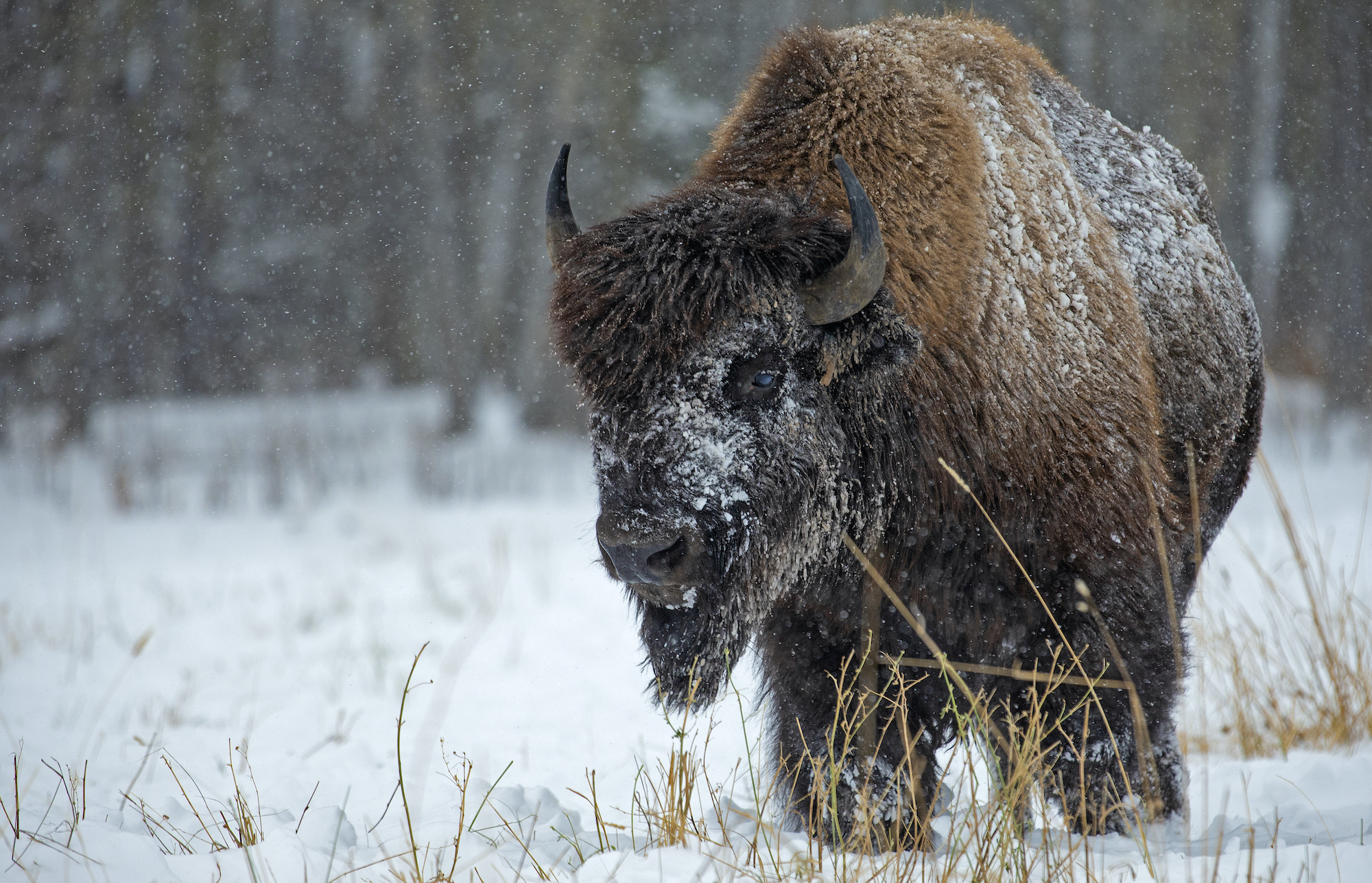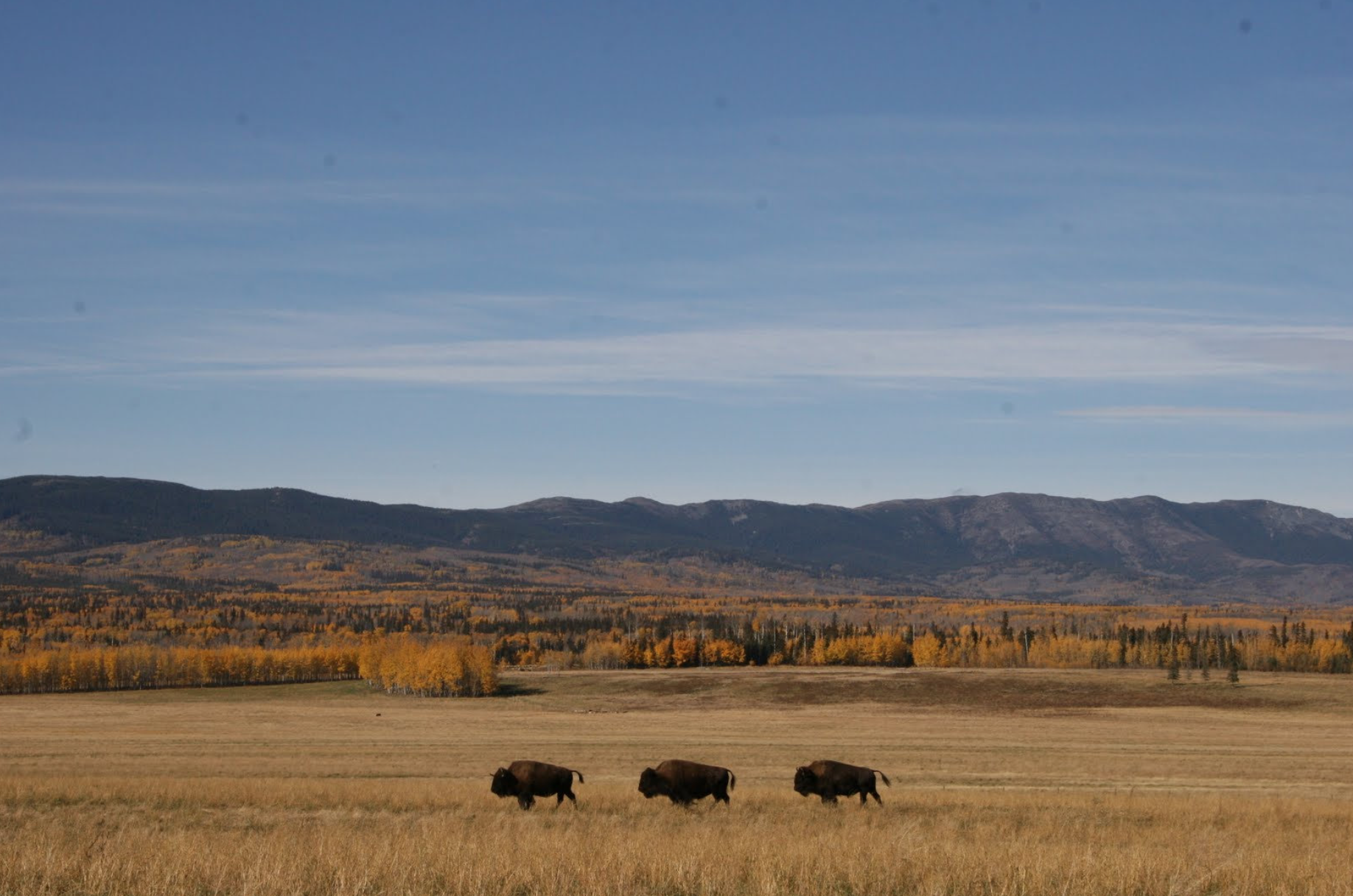FROM RANCH TO ARCTIC TABLE
Featured

Featured
January 25, 2021 | British Columbia
The team recently sat down to chat with one of our favourite farming families in British Columbia, who produce some of the only natural grass-finished bison in North America.
There’s something almost dreamlike about sitting down to a fresh, delicious meal accompanied by well-paired wine while surrounded by a barren, remote landscape of tundra, ice, and snow. The sheer improbability and giddy luxury of varied, abundant food in a place of scarcity evokes the same delight as a magic trick. The Weber tables at Arctic Watch, Arctic Haven, and Basecamp Baffin are always laden with top-notch meals prepared on site and from scratch, although their origins have less to do with magic than hard work, careful planning, a commitment to high standards, and a belief that epic adventures and good eats not only aren’t mutually exclusive but are the perfect complements to each other.
No prepared foods are flown in to the lodges, not even staples like bread or ice cream, just whole, organic-whenever-possible ingredients that make the same journeys as the guests who enjoy them. (Sometimes the journeys are more involved than others, as when the Cunningham River was running too high for the usual Unimog transport and staff had to spend twelve hours carefully rowing meat across in rafts.) Of course, there are also some special ingredients that don’t have to travel at all but are harvested on location, like freshly caught arctic char at Arctic Watch or blueberries picked at Arctic Haven. And speaking of being local, another common thread through the Weber cuisine is an emphasis on showcasing Canadian products. Guests might sample wine from the Okanagan, cheese from Quebec, and beef from Alberta, to name only a few, or they might enjoy a bison from British Columbia.
Let’s follow that bison meat from its final resting place on a dinner plate in an arctic lodge back to its source and meet the people who supplied it. Firstly, our friend the tenderloin would have been part of an order the Webers placed for 4000 pounds or more of meat and had shipped frozen to Yellowknife, where it was loaded into planes bound for the lodges. Before that, where did that meat come from? The answer is a ranch near Hudson’s Hope, British Columbia run by a remarkable family.

Christoph Weder and his wife Erika are both Canadian by way of Switzerland, while their four children—three boys and a girl ranging from sixteen years old to ten—are as homegrown as the cattle and bison they raise on their 33,000 acres of land. “They enjoy the space and the freedom they have,” Erika says about her kids, who all speak Swiss at home. “It’s important for them to go see other places, but they already know it’s pretty special what we have here.”

Christoph, who came to Canada with his parents as a four-year-old, grew up on a dairy farm. “I always had a passion for being outside, but on a dairy farm you’re in the barn all the time, milking cows. I never got interested in milking cows.” After getting a degree in agricultural economics and range sciences at the University of Alberta, he headed south to the U.S. for a master’s degree in range sciences at Oregon State University before returning to Canada and taking a government job as an extension specialist working with farmers and ranchers on how to look after and graze on their land, during which time he completed a Ph.D. in animal science., studying the wearing stages in beef cattle. But he’d always wanted to get his hands dirty ranching for himself. “And, at university, all the girls hung out with the cowboys,” he jokes.
Girls aside, what really drew him to ranching was his ambition to balance agriculture and nature. “Ranching is probably the only agricultural production system that allows you to produce food alongside fostering biodiversity,” he says. “Grazing, if it’s done right, is the most sustainable form of agriculture known to man. The bison eats the grass, poops it back on the land, sustains the grasslands, which sequester carbon and support other species. You don’t have to add fertilizer or pesticides. And the meat that comes from those types of animals and that grazing system is probably the healthiest you can buy.” In 1996, he bought his first property and ten cows.

Three years later came another major life event: while traveling in Guatemala, he met a Swiss backpacker, Erika, on Christmas Day. After two years of a long distance relationship, they married, and Erika moved to Canda. “I’m technically not really a winter person,” she says, “so when I told my family I’d met this guy from Canada, they said, well, you’re not going to go there, right? They couldn’t understand why this person who always wanted sun and palm trees suddenly wanted six months of winter. It was an adjustment, but I like it. I’m happy here.”
In 2003, they sold Christoph’s first property and bought a ranch in the Peace River region of Alberta. The next decade was spent growing that property (along with those kids!) while also honing practices that emphasize sustainability, a pursuit that earned them the Environmental Stewardship Award from the Alberta Beef Producers in 2012. The following year, the Weders heard about a ranch for sale in British Columbia, near the headwaters of the Peace River, and they jumped on it. The ranch was originally purely a beef operation, but in 2014 they bought up a neighbor’s property and found themselves in possession of 75 bison. Since then, the herd has grown to 1000 animals. “It’s like Dances with Wolves out there,” Christoph says. “Bison are 10,000 years of nature selecting for an animal to fit into this niche. On the one side, we’ve got beef cows where you see all the problems humans have created with animal selection, and on the other you’ve got this wonder of nature.” In addition to the bison and 1800 beef cows, their land is home to wild populations of grizzly bears, black bears, cougars, wolves, elk, deer, moose, and “every creepy crawly you can imagine.”

As a species that, unlike cattle, haven’t been bred for docility over centuries, bison are much more challenging to work with as a herd (i.e., moving cattle into a corral is easy; doing the same with bison is not), but they compensate by being well-adapted to and self-sufficient within their environment, raising their young and weathering the harsh climate without need of assistance. “The bison always show us the simplest way,” Erika says. “They’re wired in such a way that we can’t interfere with their instinct, and that’s probably the most fascinating part for us to work with them. They’re still a wild creature.”

The Weders also take pleasure in seeing bison’s heritage be expressed in modern ways—for example, a chef putting on an innovative culinary display by using an animal nose-to-tail. “Native Bison were literally exterminated for tongues and hides,” Christoph says, “and now we’re saving all these cheeks and oxtails so the chefs can do bigger menus. It’s cool coming up with new ways to utilize the whole animal, which is what First Nations always did.” He also points out that native people who hunted bison had the unenviable task of chasing them down on horseback or driving them over a cliff or spearing them on foot, all of which was undoubtedly stressful for the bison and would lead to less tender meat, as well as sometimes yielding old or sickly individuals. “They never got to taste meat like this,” Christoph says. “Here the bison get to be born on this ranch, and they get to leave in a box from this ranch. They’re never under stress. They’re part of the ecosystem.”

While the coronavirus pandemic has decimated the restaurant-centric market for bison meat, the Weders approached this challenging time with typical fortitude. As Erika says, “For us, it’s pretty normal to be in our bubble here with cows and bison.”
“We’ve got good food, great kids, a nice place,” says Christoph.
Erika adds, “And we still get along!”
Pre-pandemic, the Weders had already decided to go down the path of direct marketing to consumers, an approach that has served them well during this time as they’ve been able to continue supplying families across B.C. with whatever amount of meat they need. They gather enough orders, cut and wrap the meat on site, and then embark on a road trip to make deliveries. “We’re like meat narcos coming from the north, meeting in parking lots,” Christoph says. “People are getting the highest quality meat they’ll ever get, and I don’t have any middlemen in between.”
Given their independence, creative approaches to problem solving, and tenacity in the face of challenges, it’s no wonder the Weders and the Webers are long-time friends. “What they do is totally different,” Erika says, “but in a way it’s not. We understand the things they went through. And Richard is Swiss!”
Christoph says, “They started Weber Arctic from nothing, and we started our ranch from nothing. They’ve had a lot of challenges along the way, and they still try new things, and we do, too.”
This summer, if all goes according to plan, the Weders will be sending another family product to Arctic Watch along with frozen bison meat: their oldest son, Pasco, is planning to go help out and expand his already formidable wilderness skill set. His parents are confident he’ll fit right in and do whatever needs to be done. After all, that’s what Weders do. “You have to be flexible at all times,” Erika says. “We always have a plan, but with animals you can plan as much as you want, but something you don’t expect will always happen. For us, it’s normal.”
“You come up with a plan and you go for it,” Christoph says, laying out a family philosophy that sounds just as much Weber as Weder, “and you reevaluate and figure out what works, and then pitter patter, let’s get at er.”
To learn more: https://www.venatorranches.com/
We understand that booking a trip like this is a big endeavour. Please reach out to us with any questions that you might have regarding your upcoming adventure.